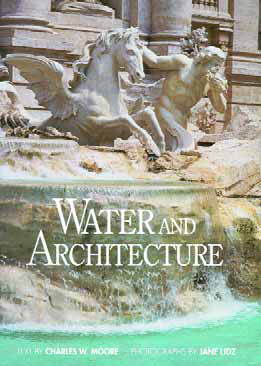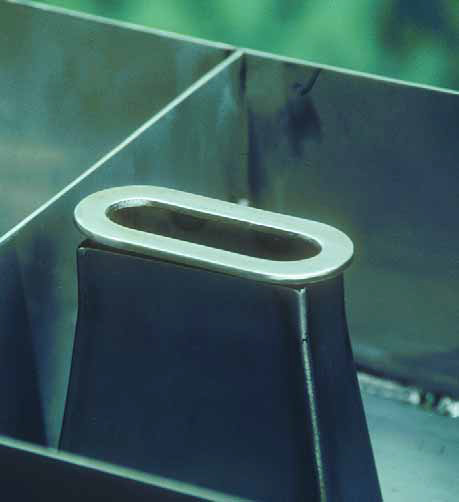The process of designing a watershape or garden usually requires the designer to answer a number of questions - the vast majority of them having to do with seeing the water and the landscape. Indeed, from considerations of color and scale to managing views and ensuring visual interest within the space, much of the designer's skill is ultimately experienced by clients and visitors with their eyes. But what if your client is blind or wheelchair-bound or both? How do you design for them? What colors do you use in your planting design? Would you even care about color? How will they move through the space and what experiences will await them? What would be the most important sensory evocation - sound, fragrance or texture? These are the sorts of special questions we asked ourselves after being approached by clients who had the desire to create a sensory garden for visually impaired and physically handicapped people. The experience shed a whole new light on the power of non-visual aesthetics and prompted me to
It's truly a diamond in the rough: a huge, sparkling blue pool set in the middle of nowhere in a country that is probably best known for being the gateway between two grand oceans. For a time before I arrived on the scene, however, the enormous rectangular swimming pool at Palabra de Vida, a Christian missionary camp in Chame, Panama, was anything but shimmering. The mission operates a camp for the region's underprivileged children, who visit the facility in shifts that stretch across several months each year. There are times when
When I first picked up Water and Architecture by Charles W. Moore (published by Harry H. Abrams in 1994), I thought I'd found the perfect resource for those of us who design and build contained, controlled bodies of water. As I delved into this book's incredibly well-illustrated 224 pages, however, for a short time I worried that the text was mostly irrelevant to the working lives of watershapers. Ultimately, however, I found the text to be very helpful - even if it wasn't in the manner I had initially thought. I was disheartened initially because the text seemed so broad in its coverage of water and architecture - and so rooted in history and philosophy - as to be of little practical use. Specifically, Moore deals with subjects as grand as rivers, oceans, harbors and architectural history in very broad and almost
The site was chosen because the existing water, terrain and natural landscape were a perfect fit: Like no other available space, the design team saw that this setting could be used to symbolize the character of Vietnam’s landscape – wetlands and bogs, water crossings, hills and forests, meadows and plains – and shaped into a memorial to casualties of a war that ended in Southeast Asia nearly three decades ago. It’s a beautiful and peaceful space, one that now encompasses four acres of land around the perimeter of Duck Pond, a small and scenic body of water nestled in the gently rolling landscape of
If you've been following this column for the past several issues, you already know a good bit about the magnificent (and magnificently difficult) project I completed late last year in the Malibu Colony. Many times in those columns, I mentioned (mostly in passing) a system of four deck-level laminar jets we planned on installing. As was the case with just about everything else on this project, incorporating the system of jets into the courtyard environment turned out to be far more complicated and challenging than we ever thought it would be. When all was said and done, however, we all agreed that meeting this particular challenge was
Whenever I receive a call for an initial meeting about a potential project, I always envision - before the client ever opens his or her mouth - that I will be adorning a multi-acre estate with a classic garden that will someday be written about in books and examined by landscape students throughout the world for generations to come. Doubtless, this call will be about the project that will bring me both fame and fortune! Now back to reality. Although there are plenty of large-scale landscape projects to be had, the smaller projects are much more plentiful. And they are often, as I have found,
During a presentation to a recent conference for the swimming pool and spa industry, I tossed this nugget to the audience: "By a show of hands, how many of you in this room believe that most people think highly of our industry? Please be honest." It was a mixed group of more than 160 people representing manufacturers, distributors, manufacturer's representatives, retailers, service/maintenance firms and, in the majority, pool and spa builders. Even with all of these different segments of the industry in the room, not a single hand went up. As one who often
I've heard it said that even though the greatest stories may require only a relatively few words in their telling, their meanings can echo through generations. Inside this issue, you'll find a concise
The people who once inhabited modern-day Mexico's Yucatan peninsula were remarkably sophisticated. Their civilization was based on a deep-rooted knowledge of astronomy, mathematics, hydraulics and engineering. They quarried stone and moved it hundreds of miles on rollers, using this raw material and incorporating it into highly refined buildings, temples, roads and monumental works of art that rival those of the better-known cultures of ancient Europe, Africa and Asia. In 2001, I traveled extensively in the Yucatan to experience the region's culture and view masterworks from many centuries past. What I found was a sense of form, line and pattern in the ruins of
Of all the concepts of hydraulic-system design, there are few that have more importance than the correlation between water flow (that is, capacity expressed as gallons per minute) and line velocity (the speed at which the water travels). As water travels through a pipe, its increase in speed (that is, its line velocity) results in an increase in resistance (expressed as feet of head) and in a reduction of end pressure, which is measured in pounds per square inch (psi). In other words, an increase in friction losses and a drop in pressure is the result of increased water velocity at a given flow. If that makes sense to you without further explanation, then you know much of what you need to know when it comes to selecting pipes and fittings and setting up a watershape's plumbing system. If it doesn't, this article will cover the basics - from selecting pipes and sizing lines to






















